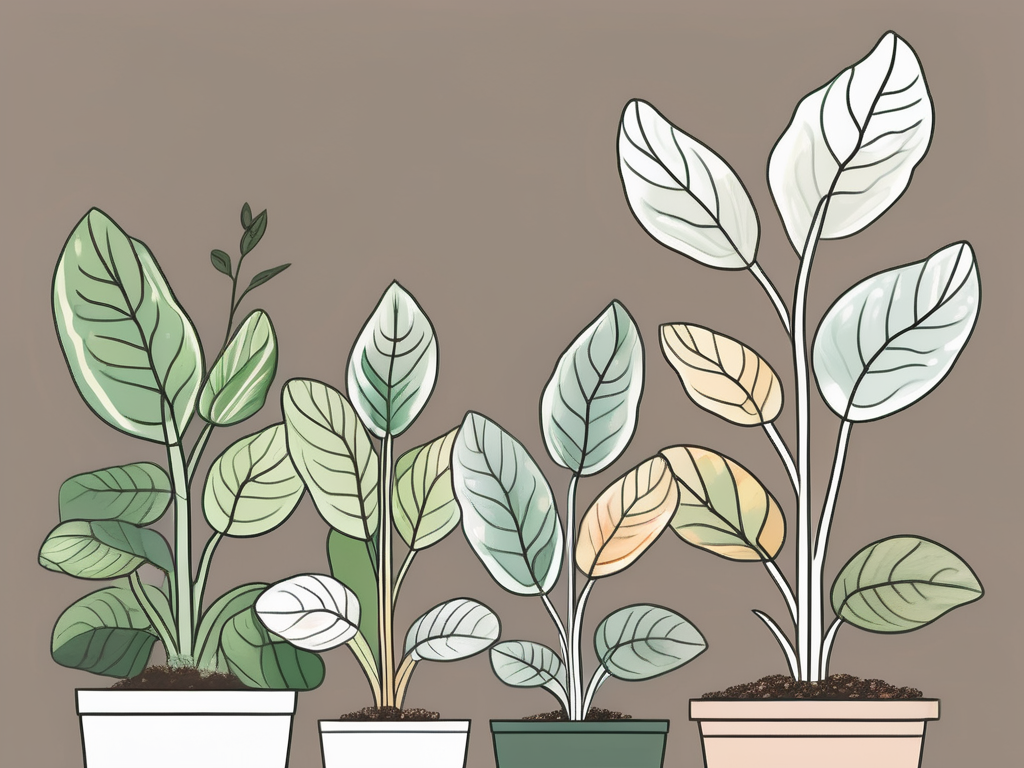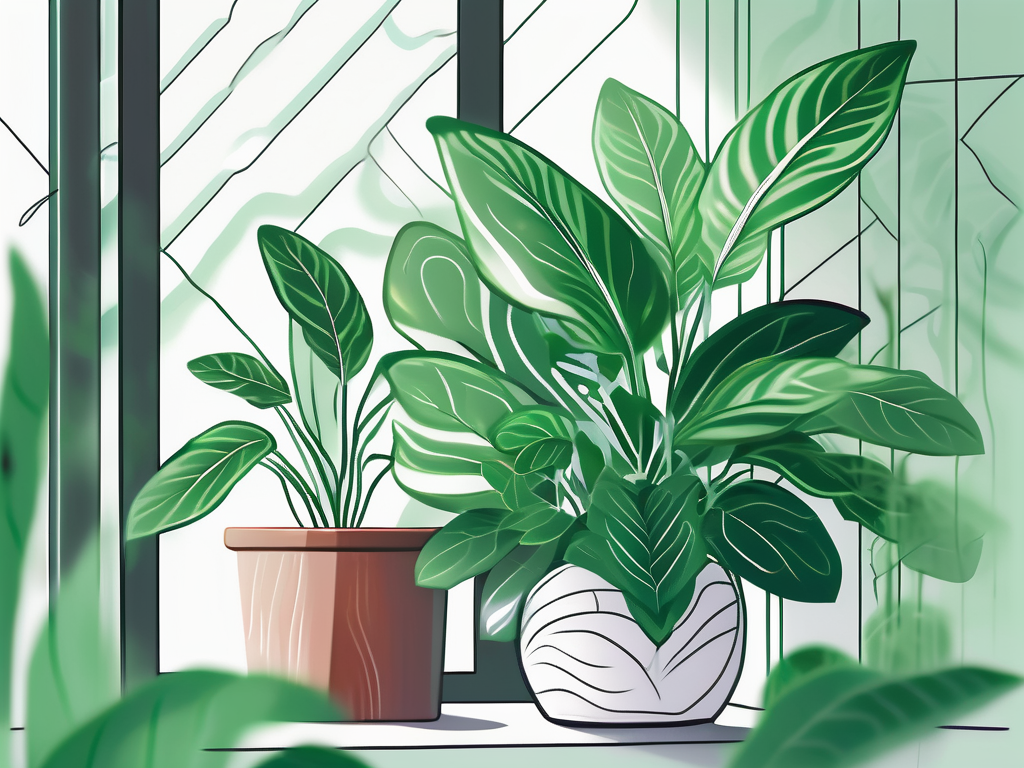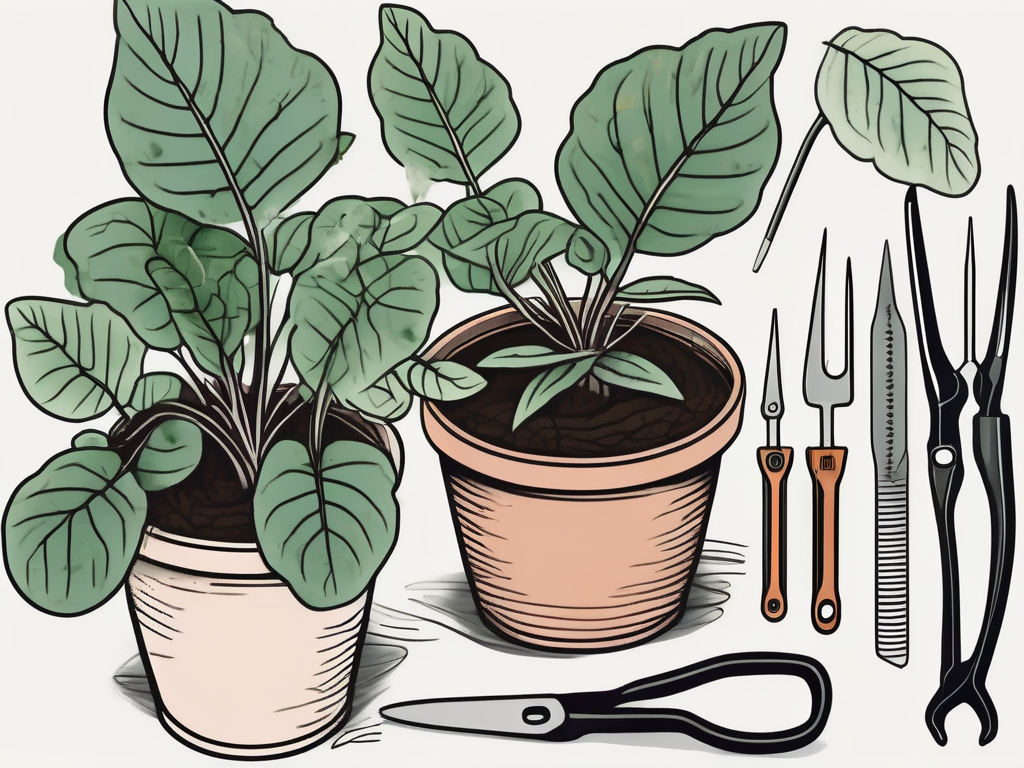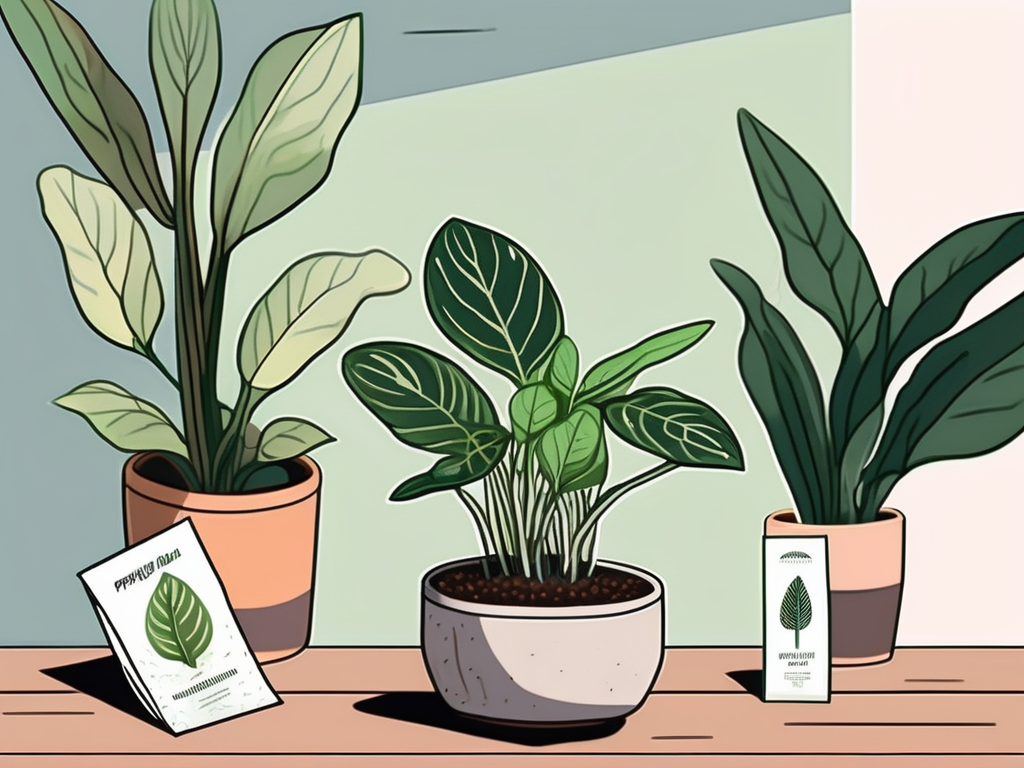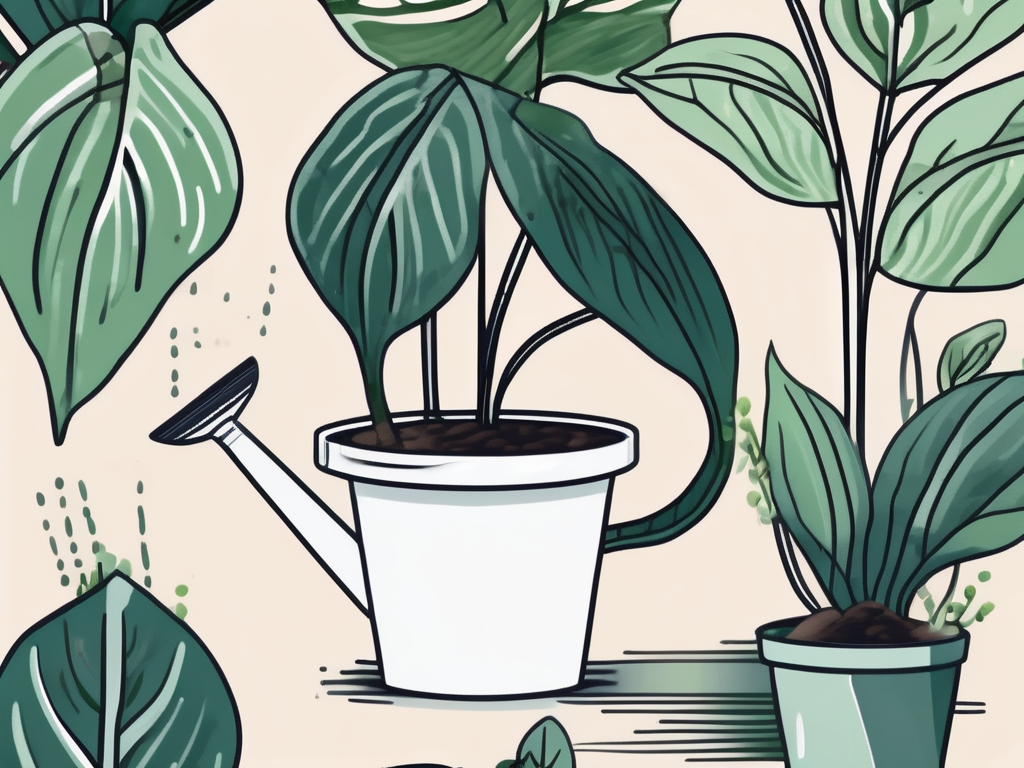
Prayer plants, with their vibrant leaves and mesmerizing patterns, have become a beloved staple in many homes. If you're a fan of having a green oasis indoors, you've probably encountered these beauties with leaves that seem to fold in prayer at night. But how do you keep them thriving?
This article covers everything you need to know to care for prayer plants, from choosing the right variety to creating the perfect environment for them to flourish. Let's get into the specifics that will help you develop a thriving relationship with these fascinating plants.
Understanding Prayer Plants: The Basics
Prayer plants belong to the Marantaceae family, which includes several varieties like Maranta, Calathea, and Ctenanthe. These plants are native to the tropical regions of Central and South America, thriving in humid, low-light conditions. Their most distinctive feature is the way their leaves fold up at night and open again in the morning, resembling hands in prayer.
Among the many types of prayer plants, the Maranta leuconeura, with its striking red veins and green leaves, is a popular choice. Calatheas, on the other hand, offer a range of patterns and colors, from the zebra-like stripes of Calathea zebrina to the bold, dark leaves of Calathea ornata. While these plants are visually appealing, they can be a bit finicky, requiring specific conditions to stay healthy.
When choosing a prayer plant, consider the space you have available and the light conditions in your home. Some varieties are more forgiving than others, so if you're new to plant care, starting with a Maranta might be a wise choice. Once you have your plant, it's important to understand its specific needs regarding light, water, and humidity, which we'll explore further in the following sections.
Light Requirements for Prayer Plants
One of the first things to consider when caring for a prayer plant is light. These plants are adapted to the dappled light of their native rainforest habitats. Too much direct sunlight can scorch their leaves, while too little can lead to poor growth and dull colors.
Ideally, place your prayer plant in a spot where it receives bright, indirect light. A north or east-facing window is often perfect. If you notice the leaves curling or developing brown edges, it might be a sign that your plant is getting too much sun. On the other hand, if the leaves are not unfurling properly or the plant appears leggy, it may need more light.
If natural light is scarce, consider using artificial grow lights. LED grow lights are energy-efficient and can provide the spectrum of light your prayer plant needs. Position them about 12 inches above the plant and leave them on for about 12-16 hours a day.
Watering Your Prayer Plant
Watering is a crucial aspect of prayer plant care, and it can be a bit tricky to get right. Prayer plants prefer consistently moist soil but don't like sitting in water, which can lead to root rot. The key is to strike a balance, keeping the soil damp but not waterlogged.
Here are some tips to help you water your prayer plant effectively:
- Check the soil moisture regularly. Stick your finger about an inch into the soil; if it feels dry, it's time to water.
- Use room-temperature water. Cold water can shock the roots, while warm water might encourage fungal growth.
- Water your plant until you see water draining from the bottom of the pot. This ensures that the roots are getting enough moisture.
- Reduce watering in the winter months when the plant's growth slows down.
It's also worth mentioning that prayer plants prefer distilled or rainwater. Tap water often contains minerals and chemicals that can build up in the soil and cause leaf tips to brown. If you only have access to tap water, let it sit out overnight to allow some of the chlorine to evaporate.
Humidity: A Prayer Plant's Best Friend
Prayer plants thrive in high humidity, similar to their natural tropical environment. If your home is dry, especially during winter months when heating systems are running, you might notice your prayer plant struggling. Low humidity can lead to crispy leaf edges and a general decline in plant health.
Luckily, there are several ways to increase humidity around your prayer plant:
- Group your plants together: Plants naturally release moisture through a process called transpiration, so clustering them can help create a micro-environment with higher humidity.
- Use a pebble tray: Place a shallow tray filled with pebbles and water under your plant's pot. As the water evaporates, it will raise the humidity around the plant.
- Mist the leaves: Lightly mist your plant with water a few times a week. Just be careful not to overdo it, as excessive moisture can encourage fungal growth.
- Invest in a humidifier: This is a great option if you have several humidity-loving plants. A humidifier can maintain consistent moisture levels in the air.
Keep in mind that while increasing humidity is important, it's also crucial to ensure good air circulation to prevent mold and mildew. Make sure your plant is not too crowded and has enough space to breathe.
Choosing the Right Soil and Pot
When it comes to potting your prayer plant, the soil and container you choose can have a significant impact on its health. Prayer plants prefer a well-draining potting mix that retains some moisture without becoming waterlogged.
A good potting mix for prayer plants might include:
- Peat moss: Helps retain moisture and provides a light, airy texture to the soil.
- Perlite or sand: Improves drainage and aeration, preventing the soil from becoming compacted.
- Pine bark: Adds organic matter and improves drainage.
As for the pot, choose one with drainage holes to prevent water from collecting at the bottom. A pot that's too large can hold too much moisture, while one that's too small might restrict the plant's growth. Typically, a pot that's about 1-2 inches larger than the plant's root ball is ideal.
Repotting is usually needed every 2-3 years or when you notice the plant becoming root-bound. To repot, gently remove the plant from its current pot, shake off excess soil, and trim any dead or damaged roots. Place it in a new pot with fresh soil, ensuring the root ball is at the same depth as before.
Fertilizing Your Prayer Plant
Prayer plants benefit from regular feeding during their active growing season, typically spring through early fall. A balanced, water-soluble fertilizer can provide the necessary nutrients to support lush growth and vibrant leaf patterns.
Here's a simple fertilizing routine for your prayer plant:
- Use a balanced 10-10-10 or 20-20-20 fertilizer diluted to half strength.
- Apply the fertilizer every 4-6 weeks during the growing season.
- Avoid fertilizing in the winter months when the plant's growth naturally slows down.
Be cautious not to over-fertilize, as this can lead to salt buildup in the soil and damage the roots. If you notice white crusts forming on the soil surface or leaf tips turning brown, it might be a sign of over-fertilization. In such cases, flush the soil with plenty of water to help remove excess salts.
On the other hand, if your plant's growth seems sluggish or the leaves are losing their vibrancy, it might benefit from a bit more nutrition. Just remember to adjust your feeding schedule as needed based on your plant's response.
Managing Pests and Diseases
Like any houseplant, prayer plants can fall victim to pests and diseases. Common pests include spider mites, aphids, and mealybugs, while fungal infections can occur if conditions are too humid with poor air circulation.
To keep your prayer plant healthy and pest-free, consider the following tips:
- Regular inspection: Check your plant's leaves, stems, and soil regularly for signs of pests or disease. Early detection is key to preventing infestations.
- Use insecticidal soap or neem oil: These natural treatments can effectively control pests without harming the plant. Apply them according to the product's instructions.
- Improve air circulation: Ensure your plant has enough space and is not overcrowded with other plants, which can help reduce the risk of fungal infections.
- Prune affected areas: Remove and dispose of any damaged or diseased leaves to prevent the problem from spreading.
If you do encounter a pest infestation, act quickly to address the issue. Isolate the affected plant from others and treat it with appropriate measures. With patience and persistence, your prayer plant can recover and continue to thrive.
Designing with Prayer Plants: Adding Style to Your Space
Prayer plants aren't just about their care; they're also about the beauty and style they bring to your home. With their eye-catching leaves and graceful movements, they can add a touch of nature and elegance to any room.
Here are some ideas for incorporating prayer plants into your home decor:
- Tabletop displays: Place a small prayer plant on a coffee table, side table, or desk for a pop of color and texture.
- Hanging planters: Hang your prayer plant in a macrame planter or decorative pot to create a vertical display that saves space and draws the eye upward.
- Window sills: Line a bright window sill with a variety of prayer plants to create a lush, green backdrop that filters light beautifully.
- Group plantings: Combine different prayer plant varieties in a single pot or planter for a striking, mixed display with various patterns and colors.
When designing with prayer plants, consider the overall color scheme and style of your space. These plants can be paired with other tropical or low-light plants to create a cohesive look. Whether your style is modern, bohemian, or classic, prayer plants can be a versatile and charming addition to your home.
Propagation: Growing Your Prayer Plant Collection
Once you've mastered the basics of prayer plant care, you might be interested in expanding your collection by propagating your plant. Propagation is a rewarding way to create new plants from an existing one, and it's relatively simple with prayer plants.
The most common method for propagating prayer plants is through stem cuttings. Here's how to do it:
- Choose a healthy stem with several leaves and cut it just below a node (where a leaf joins the stem).
- Remove the lower leaves from the cutting, leaving a few at the top.
- Place the cutting in a glass of water, ensuring the node is submerged.
- Position the glass in a warm, bright spot with indirect light.
- Change the water every few days to keep it fresh and free of bacteria.
- After a few weeks, roots should start to form. Once they're about an inch long, transplant the cutting into a pot with fresh soil.
Alternatively, you can propagate prayer plants by division. This involves separating a plant into smaller sections, each with its own roots, and repotting them individually. This method works well for larger plants that have outgrown their pots.
Propagation not only helps you grow your collection but also makes for thoughtful gifts for fellow plant lovers. Share the beauty of prayer plants with friends and family by giving them a piece of your plant.
Troubleshooting Common Prayer Plant Problems
Even with the best care, prayer plants can occasionally run into problems. Here are some common issues and how to address them:
- Yellowing leaves: This can be caused by overwatering, underwatering, or poor drainage. Check your watering routine and ensure your pot has adequate drainage.
- Brown leaf tips: Often a sign of low humidity or excess minerals in the water. Increase humidity and consider using distilled or rainwater.
- Leaf curling: This can indicate too much direct sunlight or dry soil. Adjust the plant's light exposure and check the soil moisture.
- Slow growth: Could be due to insufficient light, lack of nutrients, or the plant being root-bound. Evaluate these factors and adjust as needed.
Remember, prayer plants can be sensitive to changes in their environment, so patience and observation are key. Adjust your care routine based on how your plant responds, and don't hesitate to reach out to fellow plant parents or experts for advice.
Final Thoughts
Caring for prayer plants can be a rewarding journey, offering a chance to connect with nature and bring a touch of greenery into your home. By understanding their needs and providing the right environment, you can enjoy the beauty and tranquility these plants offer.
At Cafe Planta, we're passionate about helping you succeed in your plant journey. Whether you're looking for new houseplants, care accessories, or plant-themed apparel, we have you covered. If you have any questions or need advice, feel free to email us or DM us on Instagram. We love sharing our plant knowledge and connecting with fellow plant lovers!


















